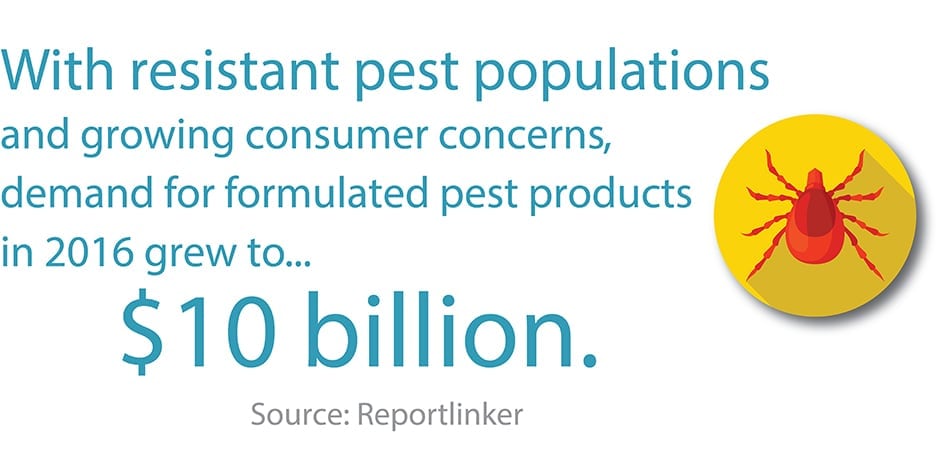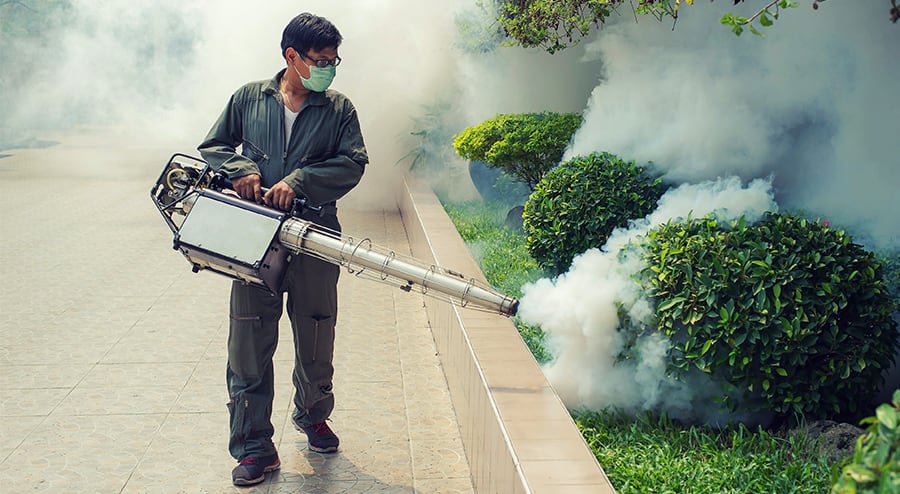Read and Learn More About Pests
Types of Pest ControlTypes of Pest Control
Mechanical pest removal is simply a way to describe the direct removal or killing of pests. It includes physical tactics like using barriers like screens or row covers, trapping, weeding, or even removing the pest itself by hand. A fairly straightforward procedure for rodents and squirrels, it can also be used on insects when the infestation is concentrated in one area. Outdoors, this method works for garden areas and even small orchards, but only if the pest species has an accessible nest. One indoor form of mechanical pest control is to change the physical conditions like room temperature to make a room less conducive to pest dwelling.
Biological pest control is called for in large, widespread areas like larger orchards, farms, and food production facilities. Biological methods all bring the known pest’s natural predators, parasites, or pathogens into the environment. If you’ve acquired a pet cat to catch mice in your home or a dog to scare off wildlife, then you’ve practiced a simple method of biological pest control. Farms and large gardens are not so simple: introducing an exotic predator to the ecosystem can make the new species yet another pest and wreak havoc on the environment. That’s why biological methods are carefully planned and executed by professionals.
Happily, there are plenty of beneficial predators in wildlife that can be brought or attracted to backyards. Birds like purple martins eat insects, ladybugs feed on pests like mites and aphids, and dragonflies and centipedes have also been proven helpful. Other predatory insects can be bought and released into the yard. And while spiders can be a pest and even a danger in human residences, they are a beneficial predator outdoors.
Yet another form of biological controls are parasitoids that kill insect hosts. A common example is laying miniature wasps into the bodies or eggs of tomato hornworms. Once the eggs hatch, the parasitic offspring kill their insect hosts

Chemical pesticides are synthetic compounds specially formulated to target specific pests, particularly insects. The most common type of pest control, chemical pesticides are used to kill or inhibit pest development. They vary in strength and are often toxic to plants and other organisms. That said, they tend to be safe so long as they are applied by licensed pest control technicians.
Sometimes small-scale infestations can be treated with chemical pesticides if guidance is carefully researched and followed to the letter. In those cases when you feel you can apply pesticide yourself, The EPA’s online Citizen’s Guide to Pest Control and Pest Control Safety can help you calculate and apply the correct, safe amount of pesticide for your target area and offers instructions on what to do if humans or animals are exposed to them.
Natural and organic pest control is derived from plants and natural extracts. To really understand what makes a method “natural” or “organic,” be aware that chemicals are either natural or synthetic. Natural chemicals exist in the environment, often produced by plants, like botanical insecticides or fermentation products from microorganisms. “Organic” really means any substance containing the element carbon, which exists in all living matter. Organic materials, in short, come from living matter.
Applied like their synthetic chemical counterparts, natural and organic pesticides are generally not expected to be as effective. But keep in mind that natural and organic matter can have toxicity, even more than some synthetic chemicals. Their real benefit is environmental: often they can attach a single pest species without infecting plants. And unlike inorganic substances, organic substances can be broken down.
Household Pest Control Solutions
Now that you know the basic categories, there are specific common methods used to address destructive household pests.
Fumigation involves sealing a structure and fogging with liquid insecticide for an extended period, typically one to three days. This expensive tactic attacks pests in all their life stages, but the contained structure cannot be used until the treatment period is over. One fumigation method is dispersing a liquid insecticide via fog or mist with limited penetration so that the area can still be used while the treatment is in progress.
Sterilization involves the mass rearing of a species, treating it with X-rays or another method, and releasing the newly sterilized pest into the wild. This can significantly reduce insect populations, especially in species that don’t disperse widely, or in which females only mate once.
Poisoned bait is a common method for controlling pests like rodents, birds, ants, cockroaches and other pests. All have a poison and food attractant inside granules or other form. A quick-acting toxin is used on flies to stop further egg production as soon as possible. For ants, this takes the form of a slower-performing poison so workers in the colony can stay alive long enough to carry the substance back to the colony.
Poisoned bait isn’t foolproof, however, even in the species it is designed to target. Some rodents have become resistant to the common poison warfarin. In known cases of warfarin resistance, exterminators substitute with defenacoum. Both indoors and out, there is a risk of unintentional poisoning by pets or wildlife.
It goes without saying that prevention is the best pest control method – at least insofar as we can control our environment. Keeping homes clean of excess clutter, loose paper, standing water, and unbagged trash is the first step in controlling potential pests.
Million U.S. Households Report Using a Pest Control Service (Source: Statista.com)
More Pest Control Solutions
Read Reviews
Read reviews by other customers like you.
Research
Tips and articles to help you select a pest control provider.
Find Providers
Find a qualified pest control provider in your area.


